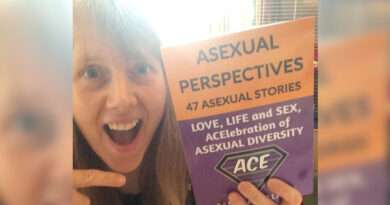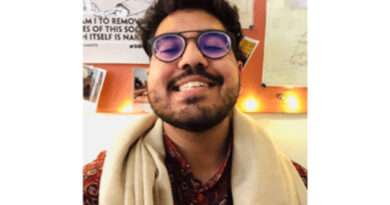Perception of Pansexuals and Panromantics
Archa (IG: @goddessiangaygirl)

Demi Lovato. Miley Cyrus. Janelle Monáe. Angel Haze. Brendon Urie. Cara Delevingne. Often you have heard about one of these personalities, and since they come publicly as pansexual, you have seen their faces on the news. But what does pansexuality entail, rather than pansexual or another LGBTQ+ identity? What is pansexual?
The prefix pan- comes from the Ancient Greek word for “all, every”. According to the Oxford English Dictionary, the term pansexual has been around since at least the early 1900s as a psychological term that describes sex as a primary motivator for human beings. Its current definition has been around since at least the late 1960s. The idea of sexual attraction that isn’t limited to binary constructions of gender is not new — it’s just that more and more people believe it to be possible and positive. Queer advocacy organisation GLAAD broadly defines being pansexual as ‘being attracted to all gender identities or attracted to people regardless of gender.’
PANSEXUALITY AND PANROMANTIC
Pansexuality and being panromantic are closely linked, but someone can be one without being the other. If someone is pansexual, they can feel sexual attraction to all genders. Many people who are pansexual are also panromantic, so they just call themselves pansexual or “pan.” However, some people may not experience romantic attraction to all genders to which they are sexually attracted. These people may be pansexual and homoromantic, for example – only able to feel romantic attraction to people of their own gender.
On the other hand, a panromantic person may only feel sexual attraction towards certain genders or people. For example, they might be panromantic and demisexual, so they can feel a romantic attraction to anyone but only feel sexual attraction towards people they are very close to.
It’s important to remember that being panromantic does not necessarily mean that a person experiences desire in the same way toward persons of all genders, and it does not mean that a person experiences sexual attraction irrespective of gender. That’s why there’s the distinction between panromantic and pansexual.
PANSEXUALITY IS NOT BISEXUALITY
Pansexuality is different from bisexuality but the two aren’t mutually exclusive. Being bisexual means being attracted to more than one gender, while being pansexual means being attracted to people regardless of gender. Pansexuality and bisexuality are not in conflict. In fact, some bisexual people also identify as pansexual, and vice versa. Pansexuality is included under the bisexual umbrella, which covers anyone who experiences sexual attraction to more than one gender. The prefix pan- means “all,” so pansexuality is an attraction to all genders, or an attraction to others regardless of gender. The term bisexual is often assumed to mean attraction to two genders, or attraction to men and women (this is still the definition according to many dictionaries), but bisexuality isn’t inherently binary. Bisexual people are attracted to people of both the same gender and different genders from their own. There’s even the emerging term bi+, which makes it more explicit that the term isn’t limited by binary definitions of gender and sexuality. Many people use both pansexual and bisexual to describe themselves, depending on the context. And some pansexual and bisexual people use “queer” to describe themselves as well!
Try thinking about it in terms of chocolate bars. One person might say, ‘ I like more than one chocolate bar!’ Another might say, ‘I like all chocolate bars.’
The first person might like all chocolate bars, but they might not. They might not like Snickers or Bounty. Perhaps they like blocks of chocolate but not ones filled with different ingredients.
This is because ‘all chocolate bars’ is, by definition, more than one. However, ‘more than one’ isn’t technically all.
BREAK THOSE MYTHS
Being pansexual is not the same as being polyamorous.
Though many pansexual people also identify as polyamorous, pansexuality is about the gender of the people one is attracted to, while the polyamory is about the ability and commitment to form romantic and/or sexual relationships with more than one person. Not all pansexual people are polyamorous and not all polyamorous people are pansexual.
Pansexuality is not rare.
Contrary to popular belief, bisexuality is becoming increasingly common, both in terms of people who self-identify using the term and the number of people who have had sexual relations with more than one gender. As people become more educated on nonbinary identities, it stands to reason that pansexuality will become an increasingly common orientation as well.
Pansexual people can be attracted to anyone of any gender, but it doesn’t mean they’re attracted to everyone.
It’s a myth to think that pansexuals are simply attracted to everyone they encounter. Just because someone has the potential to be attracted to people regardless of gender doesn’t mean that they’re any more or less likely to be attracted to a particular person. That’s like saying straight women are attracted to all men, which is obviously untrue.
It’s not uncommon for people who once identified as bisexual to become pansexual.
Like Miley and Janelle, some people who formerly identified as bisexual later identify as pansexual. “Bisexuality as a term has experienced criticism for adhering to a binary system of gender, a.k.a. ‘I’m attracted to men and women,’ even though this strict definition of bisexuality doesn’t fit many bisexual-identified folks,” says Rena McDaniel, who has a master’s degree in counseling with a specialty in gender and sexual identity.
HOW TO KNOW MY SEXUAL AND ROMANTIC ORIENTATION?
There’s no test to determine whether you’re bisexual, pansexual or any other orientation, but Healthline suggests asking yourself these questions to help:
Is there any gender that I don’t ever feel attracted to?
Is there any gender — or group of genders — that I’m not sure if I’m attracted to?
What word feels best?
What community do I feel comfortable with?
Am I romantically attracted to the same people I’m sexually attracted to?
Remember, there’s no right or wrong and you can identify with multiple terms – you can also change your mind later on!
BY ARCHA
ABOUT THE AUTHOR:
ARCHA identifies herself as a homoromantic pansexual woman. She is an active member of the Creative Community and Study Circle of All India Queer Association (AIQA). Her imaginative works were researched for Resilience in BIPOC women and nonbinary people during COVID by the University of California, Los Angeles. Her works were published in anthologies The Insight of the Soul, Walking Towards Home, Spark That Ignites You, Cloudscape, and Treasured. Writing her first poem during Kindergarten, she has always been extremely creative. Archa is not just into writing (poetry, novels, short stories, essays, and quotes) but, also passionate about abstract art, scriptwriting, storytelling, acting, photography. Trained in Hindustani Classical Vocal Music and Western Contemporary Vocals, she composes and performs songs concerning equality, queer love, feminism, women, and positivity. As an ardent queer feminist, artist, activist & researcher, she is also a part of Indian Queers Collective, SPECTRA, PU Feminists and, Rising Colours. Currently pursuing her Master’s in Women’s Studies from Pondicherry University, she is upholding an impressive academic record. As a Pagan, she’s inherently connected to Nature. She believes her talents and uniqueness will make positive changes in the world through her works and words.
You can keep in touch with ARCHA via:
Instagram: @goddessiangaygirl
Facebook: facebook.com/archabanerjee
LinkedIn: www.linkedin.com/in/archabanerjee
Blogsite: moonmermaidmusings.blogspot.com



